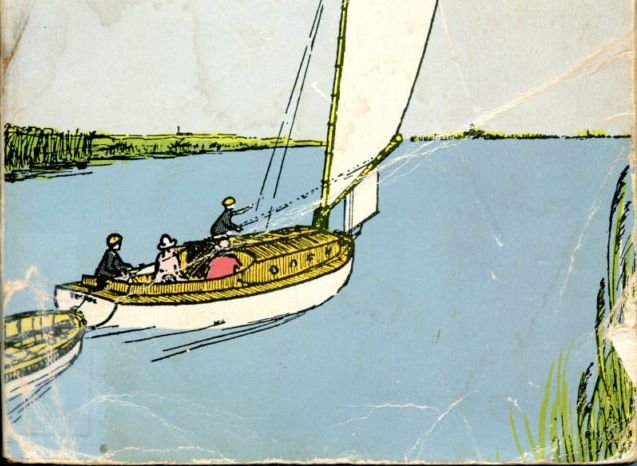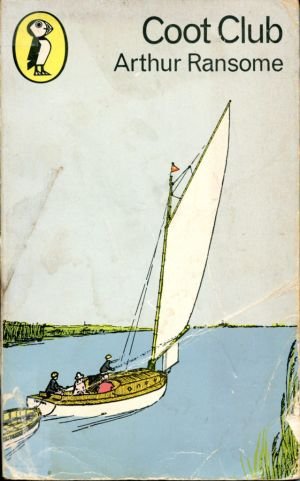
I nabbed a copy of Coot Club for free at the dump swap shop. It’s a 1969 printing of a book originally published in 1934.
This is a children’s story, a bit in the nature of Wind in the Willows – you know, a children’s story that runs for 350 pages of small type with occasional line drawings. What today we’d call a book for grown-ups.
A quick search on Amazon shows the author, Arthur Ransome, is still widely read. The 2015 movie Swallows and Amazons is an adaptation of another book in this series.
This copy has been all marked up with notes in pencil. Words are underlined next to illegible scribbles. It took me a while to work out what been done, until I realized that someone had used the book to practice their English. I can’t work out their markings, which seem Eastern-European.
Whoever the reader was, this book was a good choice for a window into 1930s British life. I do pity them working out some of the obscure river-boating terminology (words like "reef" and "staithe"). And from their notes it seems they really struggled with passages written in Scottish dialect.
The simple plot involves children sailing around a network of rivers and broads (lakes) in the region of Norwich, England. They spend their summer checking on birds’ nests (the coots) and teach a couple newcomers to sail. Ransome provides just enough suspense with the shenanigans of some “hullabaloos” who’ve chartered a noisy motor yacht. The hullabaloos race around the rivers, upsetting smaller boats with their wake and blasting raucous dance music from a Victrola. (Teens today with their hand-cranked record players and their dance music!)
Oh, and there’s a bit of a chase when a pair of twins get left behind for an important voyage and then hop from vessel to vessel (a wherry, a tug, a sailing barge), relying on the kindness of strangers to catch up with their friends.
There's a lot to be discussed about child-rearing, here. The 1930s were a time when kids were cut loose to row, sail, and explore the countryside unattended. These kids do things we wouldn’t dream of letting kids do today. An elderly woman travelling with her grand niece and nephew lets a young boy she’s just met captain her boat on a potentially dangerous voyage. Twin girls, completely unattended, hop on a boat with strangers. Horrifying, right? But what happens? They get treated to tea by the captain’s wife. Everyone the kids meet is eager to show the younger generation how to enjoy life on the water.

This isn't a safe world, by any means. There’s a storm. There’s a narrow escape from some “wreckers,” who offer tourists a tow through the narrow passages in hopes of trashing their vessels and then claiming the salvage. And docking a sailboat in heavy winds without an auxiliary engine is a good way to lose a hand, or worse.
Despite the threats, these kids are not coddled. They’re taught how to handle themselves, and then cut free to sail and explore. They don't wear life jackets. And when they need to bike somewhere, they don't wear helmets, either.
It’s a bit sobering to think that most of these kids would be off to the war in a few years.
This book has a timeless charm and would make a great summer read for parents and children, and parents who are looking for something to read to their children. It should also be up high on the reading list of the Free Range Kids movement. Maybe it's a shame that someone handed it off to the dump swap-shop, but I'm glad I found it.
(Steer clear of the Swallows and Amazons movie, though. It doesn’t have a tenth the charm of this book.)
